The technique and process of painting, the colours, the
tools, the conventions and canons of art criticism are the theme of texts on
painting. The Chitrasutra in the Vishnudharmottara is the one standard text in
India. Most of the other books of the medieval period, like the
Abhilashitartlzachintarnani, Sivatatvaratnakara, Silparatna, Naradasilpa,
Sarasvatisilpa, Prajapatisilpa, are from South India.
The oldest text which has come down to us today is the
Chitrasutra in the Vishnudharmottara. It is probably the same as that mentioned
by Damodaragupta in his Kuttanimata as that mentioned by connoisseurs of art,
bharatavisakhila-dattilavrikshayurvedachitrasutreshu patrachchhedavidhane
bhratnakarmani pustasudasastreshu atodyavadanavidhau nritte gite cha kausalam
tasyah, (Kuttanimatta, 124-25). It may thus be seen that painting was one of
many arts like music, dance, medicine, etc., each with a standard book written on
it by a specialist.
The Chitrasutra in the Vishnudharmottara has the most valuable
material on the classifications of pictures, painting materials, merits and
defects in painting as well as practical hints very useful to painters.
The Vishnudharmottara covers several subjects like dance,
music, prosody, grammar, architecture, sculpture, etc. Painting is also
included therein. There is a great stress laid on the close relationship among
fine arts like dance, music and art. It gives a classification of painting into
satya, natural, vainika, lyrical, nagara, sophisticated, and misra, mixed. The
origin of art is attributed to the sage Narayana who created Urvasi, the
beautiful celestial nymph, by drawing a beautiful figure on his thigh. This
explain the origin of drawing. Narayana taught this to Visvakarma, who
successfully interpreted the entire theme of the universe by imitating it in
art.
The Vishnudharmottara describes five types of man, hamsa,
bhadra, malavya, ruchaka and sasaka, and corresponding types of women.
Varieties of hair like kuntala, long and fine, dakshinavarta, curling to right,
taranga, wavy, varidhara, straight and flowing, jutatasara, curled and
abundant, are enumerated. Shapes of eyes are described like chapakriti,
bow-shaped, utpalpatrabha, blue-lotus hue, mats yodara, fish-like,
padmapatranibha, lotus-petal like, and sanakriti, globular. The iconography of
gods is discussed. In this context the different sthanas or poses like
rijvagata, anriju, sachikrita, sama, ardhavilochana, parsvagata, parivritta
prishthagatta, parivritta and samanata are described. Then the principles of
kshayavriddhi or foreshortening are explained. The text then proceeds to
describe bhittisamskara or the preparation of the wall for painting. Primary
and secondary colours are enumerated, as also their preparation and
application.
The classification of pictures as satya, vainika, nagara and
misra comes next. There are three types of vartana or shading in a picture
recognised patraja raikhika and binduja. The next topic for discussion is
merits and blemishes in pictures. This and the subsequent exposition of the
philosophy of painting including propriety in painting, the number of rasas or
moods that can be portrayed in pictures, with illustrations for each,
constitute, as it were, the rhetoric of art.
The Samaranganasutradhara is another text on art by the
Paramara king Bhoja, but its main theme is architecture. It contains a small
section on painting, specially from the point of view of rasas to be portrayed
in pictures. The Abhilashitarthachintamani by king Somesvara of the Western
Chalukya dynasty of the twelfth century has an interesting chapter on painting.
Paiiiting is described in the context of the decoration of the natyamandapa.
The preparation of wall, bhittisamskara, is first taken up. Vajralepa for
mixing colours is discussed next. The number of colours, the brushes, their
variations and other art materials like tulika, lekhini, vartika are mentioned.
Light-and-shade effects produced by colours and their combinations, application
of gold, burnishing, etc., are discussed. The variety of poses, the preparation
of forms of icons, varieties of painting like rasikachitra, dhulichitra,
bhavachitra, viddhachitra and aviddachitra are all discussed in this text.
The Sivatatvaratnakara in the seventeenth century text which
closely follows the
Ablimishitarthachintamani.
The Silparatna, a
sixteenth century text by Srikumara, has a section on painting styled
chitralakshana. It gives a threefold classification of chitra into chitra,
ardhachitra and chitrabhasa, figure in the round, relief work and painting.
Five primary colours, i.e. white, yellow, red, black and blue, are recognised.
Varieties of vartikas or brushes, varieties of pose, modes of light and shade,
mixing of colours, application of gold and its burnishing are explained. This
text gives a classification of pictures into rasachitra and dhulichitra. This
rasa is nothing but the bhavachitra of the Abhilashitarthachintamani.
The Naradasilpa has two chapters. One deals with the
chitrasala and the other with chit ralankritirachanavidhi. The former describes
art galleries, while the latter gives a classification of pictures like
bhaumika, kudyaka and urdhvaka, related to the floor, the wall and the ceiling.
The first corresponds to the rasachitra and dhulichitra of the
Abhilashitarthachintamani which is the same as the temporary decoration on the
floor like kolam, ran goli and alpana; the painting on the wall is mural
decoration; the third is almost the same, except that it is on the ceiling.
Pictorial themes and their appropriate location are also a topic of discussion.
The Sarasvatisilpa is another text on painting which repeats
a classification already known, viz., chitra, ardhachitra and chit rabhasa.
Varnasamskara or preparation of colours and enumeration of murtis and their
iconography are other subjects treated here.
Many texts like Prajapatisilpa are now lost. Apart from all
these Silpa texts, the most valuable references to painting are from general
Sanskrit literature, which contains innumerable passages, indirectly and unconsciously
and almost casually referring to the methods in vogue, to the idea in the air.
These, studied carefully, have more to reveal than the texts themselves.
Writer - C.SIVARAMAMURTI
Subscribe to:
Post Comments (Atom)

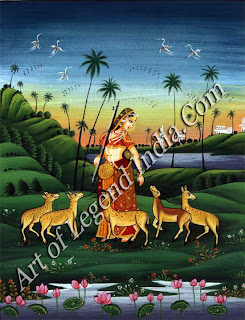
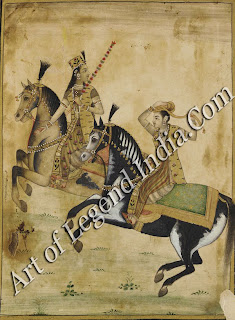
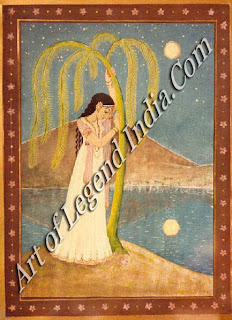
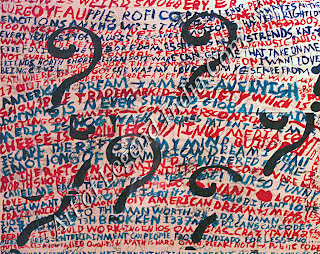
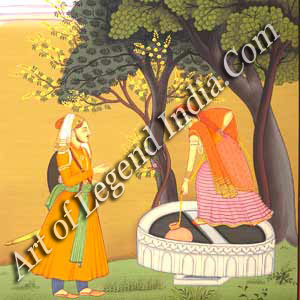










0 Response to "Texts on Painting -Indian Painting"
Post a Comment